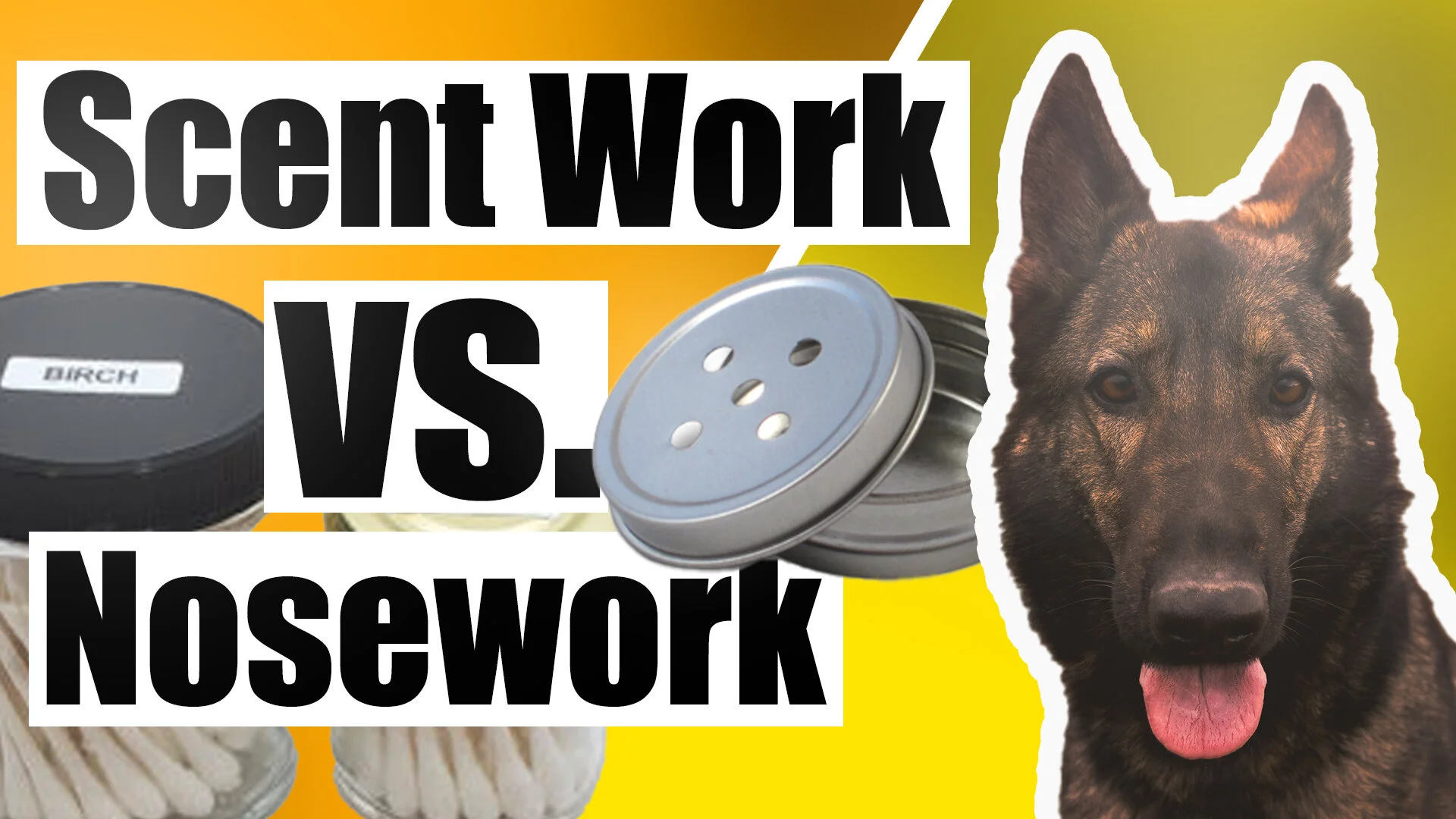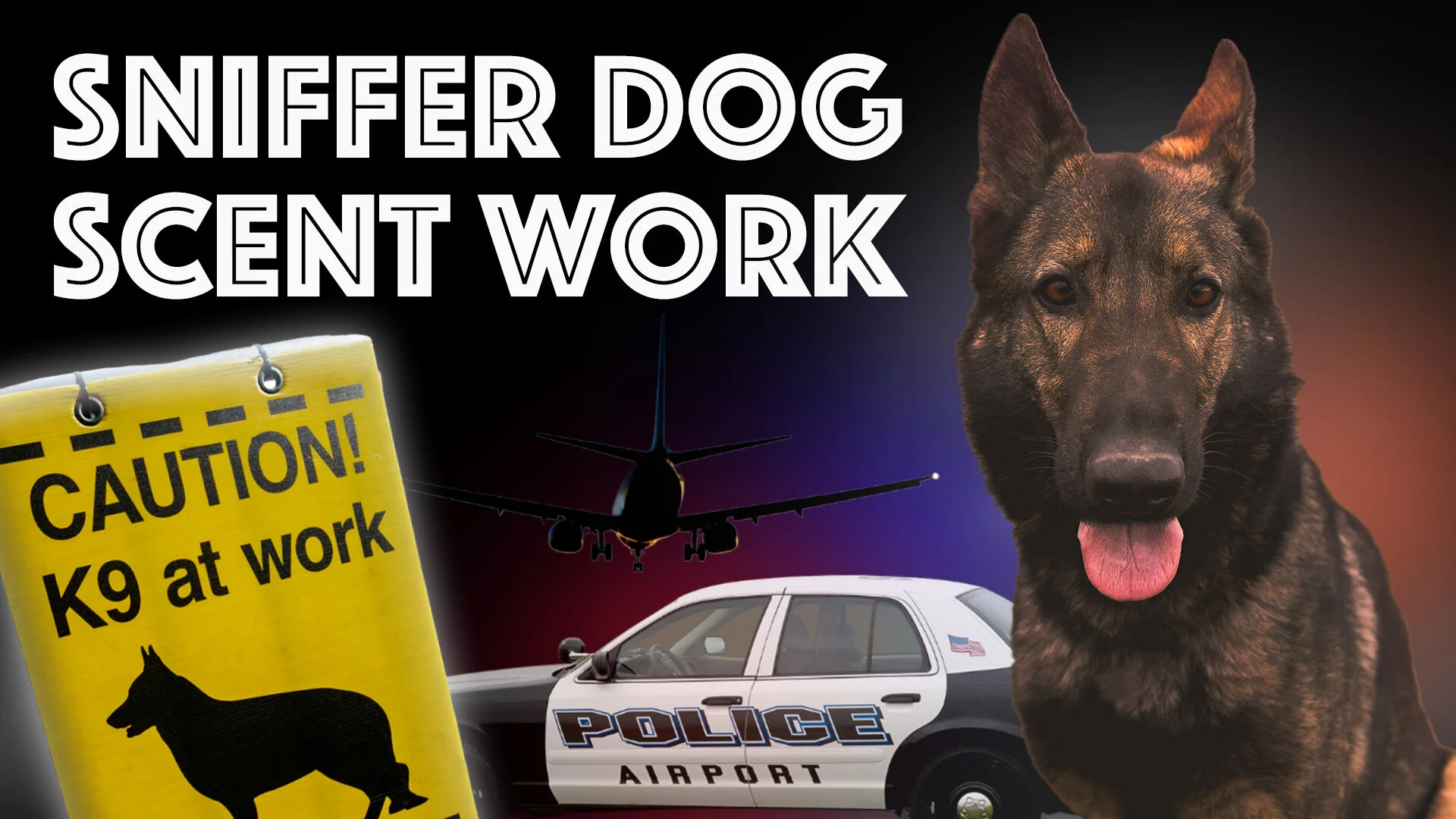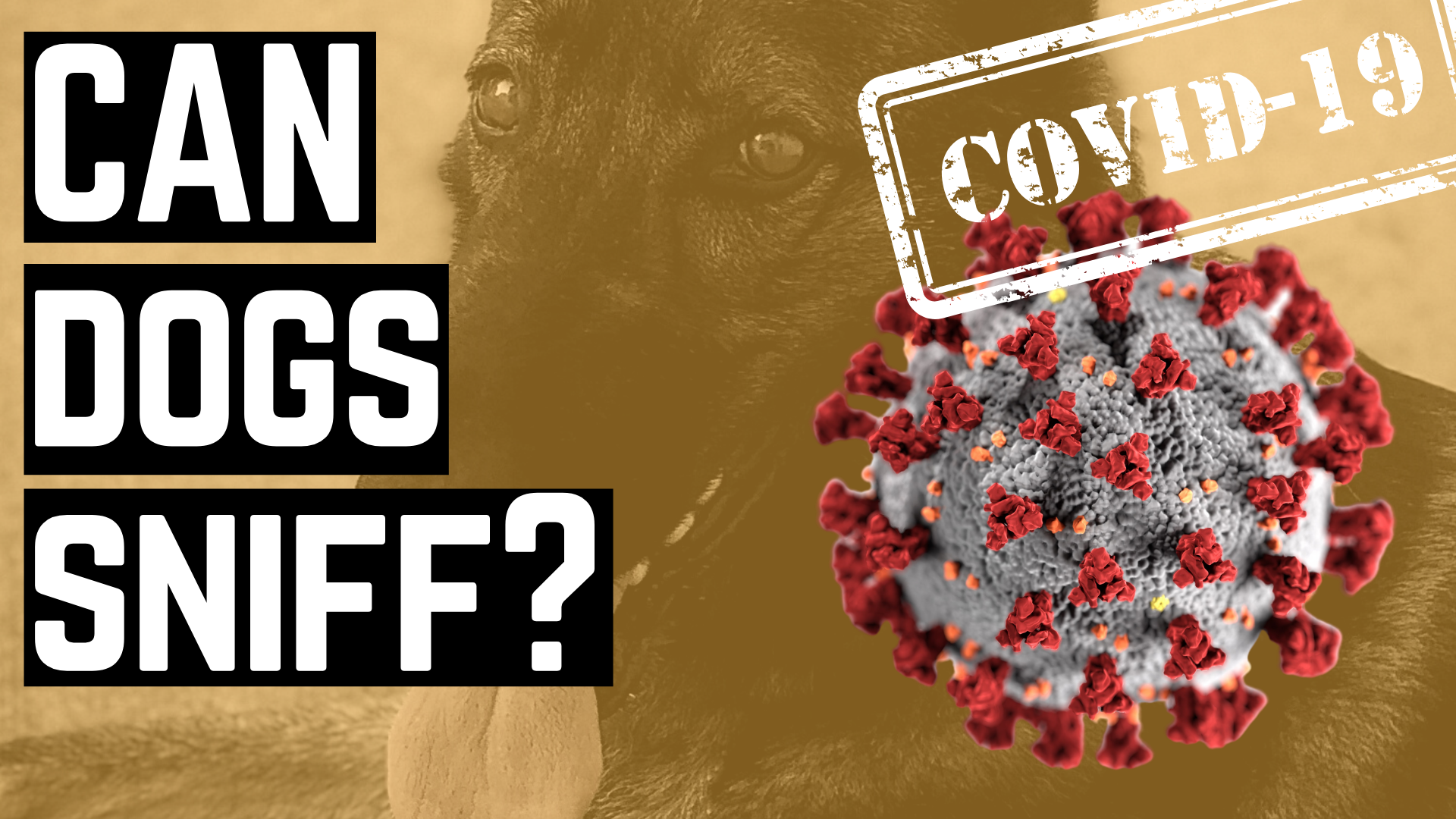The AKC Virtual Home Manners Title (VHM) - Adult
HIT PLAY OR READ THE POST BELOW:
🎧 Listen to the episode on: Apple - Spotify - PocketCast - Breaker - RadioPublic
In this episode, Geryah Dingle discusses the AKC Virtual Home Manners (VHM) Title, and how you and your dog can earn a title from the comfort of your own home with a little time and $25. With all the disruptions that came with 2020, the dog training industry was no exception. Many families welcomed a new pet in their homes during the pandemic, and AKC designed the VHM title so that handlers could teach their dogs manners while maintaining social distancing; many of the behaviors are very similar to the ones exhibited in the Canine Good Citizen test which requires in-person testing.
How to Earn an AKC Title from Your House:
In this episode, I discussed the American Kennel Club (AKC) Virtual Home Manners (VHM) title and how you and your dog can earn that title from the comfort of your home with a little bit of time and about 25 bucks.
With all the disruptions that came with 2020, the dog training industry was no exception. Many families welcomed a new pet in their homes, and AKC designed the VHM title so that handlers could teach their dogs manners while maintaining social distancing.
Many of the behaviors are very similar to those exhibited in the Canine Good Citizen test, which requires in-person training. This new title is how you and your dog can earn an AKC title from the comfort of your home.
So what is the AKC VHM title? Well, it encourages you to teach your dog manners from home. It allows you to maintain your social distance and teach the basic knowledge that you would need as a stepping stone to what is most commonly known as the Canine Good Citizens (CGC) test.
So it emphasizes good behavior. With the influx of folks who've welcomed new pets into their homes during this pandemic, this is more critical than ever whether they want to get a title or not.
So there are two levels: the puppy and the adult division. The adult division is for dogs four months and older, but all breeds can compete as long as they are AKC registered. So they have to be either registered with the AKC or enrolled in the purebred alternative listing program or enrolled with AKC Canine Partners.
But either way, it's pretty much open to a broad spectrum of dogs, and the AKC will list the title on your dog's record just like any other, and it will appear on pedigrees. That's pretty awesome in the sense that it's legit.
It's open to all breeds of dogs, and you can track it like any other record for your animal. When you think about the areas you test, it's talking about food or walking on a leash or petting and following commands, like sit, stay down, etc. So the skills correlate to the dog owner having control over the dog, especially you as the handler, demonstrating that, "Hey, we're not chaotic around here. We have some bit of control."
Because when you welcome an animal into your home, I think you owe it to the animal and your family - Some of us live solo, but giving our dogs proper training is a common goal. So being able to walk the dog, which is one of the most frequently cited activities that owners want to do with their dogs, and develop a bond with your dog during playtime is critical.
So these are all things that should be a part of a well-rounded life with your animal, good play, bonding relationship, good social skills, and just that control. So how do you title your dog?
So number one, the owner pets and then grooms the dog. So basically two to four times, you should be able to groom your dog with a brush that applies to the coat type on the head and chin, shoulders, back, chest, belly, and be able to check the ears and the feet without your dog actively trying to get away.
Because these are things that you would typically have to do if you are a dog owner. You have to get your dog groomed or groom him or her yourself to make sure that they have a healthy coat and nails and ears and all these ordinary things, just for the medical side of things.
Grooming technique is a great skill to have. It helps ensure that your dog is socialized early and often so that these are significant events for him or her.
Number two, you want to be able to sit on command with no lure. So when we're teaching basic commands such as sit down, it's straightforward for us to use a lure, get the dog in the correct position or use what we call targeting to get the dog in the right position. For the sake of this title and the test name, you want to be able to get your dog to sit on command, basically with a verbal cue but no lure.
The third command is down. You want to be able to put your dog in the down position on command and with no lure. Similar to sitting, but you want to get them to do a down.
Number four is you want your dog to be able to show that he can come when called indoors from about either 20 feet or from a completely separate room. You can practice this, and I can illustrate it on the Dingle Days YouTube channel.
You want your dog to get comfortable without being so anxious, just being away from you. Then, you want your dog to be excited to come back to you because you always want that behavior to be exciting and very motivating. After all, we want to maintain control of our animals at all times.
And while not all dogs are off-leash trained, we want the recall to be something that your dog wants to do because you never know when you're going to have to take control of your dog and be able to reach out and grab them by the collar and maintain control of your animal.
Number five is manners related to food. You can choose two different options, basically you as the owner, having a snack, and basically, your dog's not harassing you trying to get food from you.
They're able to coexist in the same space without that being a hindrance to that relationship. And we've all seen those examples of dogs where they're begging, and they're right up under you while you're trying to eat your food. So this is demonstrating to the judge that, "Hey, I'm able to have my dog sit, be around me while I'm eating, and we have a respectful relationship when it comes to that."
The other option under manners related to food is you can actually, as the owner, place the dog's dish down. And one thing that I practice not often, just because I don't like to play with my dogs food too much, but you can have your dog say, for instance, stay in a sit, and then you place the food down, you say, wait, or leave it or whatever your command is.
And then they only come for the food once you give the okay, or the release command, to show that you, once again, you have that relationship, you have that bond, all the things come from you, including their foods.
It's not something to be used against your dog; it's just showing manners related to food. Because the last thing you want is to go to your food bowl, fill it up, get servings ready, and your dog is jumping all over you. That's not what you want feeding time to look like. It would help if you controlled meal time like any other activity.
Number six is your dog's behavior as it relates to the doorbell, knocking or greeting a real or imaginary guest. The reaction to doorbells is specifically for my German shepherd dog, Disney, a manner that we consistently struggle mastering.
I think we're pretty much good on every one of these other tasks. Of course, you can always sharpen them, but I am a little bit concerned about how we will desensitize him to the doorbell. It is just such a disruptor. It's something that excites Disney.
So that's something that we'll be working on in the coming weeks because I would love to get this title with him, mainly since anybody can do it from the comfort of their home and then post the video for the judge to see.
The next behavior, number seven, is teaching your dog to go to their place or their crate, and then they have to stay there for one minute. Duration is something that you should work on anyway with your dog to be able to be in a controlled environment with them, without them just having to run all over the place.
You want to make their "place" a great spot that they want to be with positive associations, whether that be their crate or their bed or their mat or platform or whatever you have to be that special place. So just right there on the ground or the floor, shall I say, while you're watching Netflix or whatever.
You want your dog to be able to do that without whining, without complaining, just being content, and you slowly build that duration over time. You don't start at one minute; you should start with short iterations. And then what I typically do to train this behavior is dog sits there, let's say five seconds, give him a treat, wait five seconds, give him a treat, wait five seconds, give him a treat. And then you slowly build that duration out.
The biggest problem with most handlers is that they try to take the treat or the reward away too early. They want to jump straight from 10 seconds to five minutes, and it's just not going to happen. So take your time with this, but this is a behavior that you can quickly train. Once again, it's just building positive associations with your dog to get these duration type commands on cues.
Number eight is about demonstrating a relationship. So you have four options for this one. So you can play indoors with a family member or handler, or owner.
You can try some hide and seek with your dog. Again, this plays on that whole come when called iteration.
You can do some scent work which is a joy of mine; you can use three cups and then hide a treat underneath one of the cups, mix them up, and play the game with your dog.
You can have your dog do a trick. Again, this shows that you're spending that valuable time with your dog. It's showing that you have a relationship with your dog.
You can also play with a toy or a stuffed animal with your animal. Those are some of the things where you can do where you can demonstrate that relationship. And a lot of them have to do with play or a trick or hide and seek.
Number nine is you and your dog being out for a walk. Well, you don't have options per se, but you have to do both of these behaviors. So you need to be able to place a leash on your dog, and they need to act calmly before exiting the door.
So if you have a patio or a front door or wherever you go outside - outside, it's like this remarkable place. Again, you are the keeper of all good things for your dog, so you want them to be under control when you have the leash. The last thing you want is your dog dashing out of the front door because you never know what's on the other side, for instance.
You don't want your dog running out into the street. You might have something in your hands. You want to control the experience. And use sit, wait, okay, or whatever your cue command is for your dog to know it's okay to go through that threshold. And then you want your dog to be able to walk on a leash.
We've talked about this in some of the previous Dingle Days podcasts concerning who's walking who. Sometimes, dogs embarrass their handlers. You want to be able to build that muscle memory, if you would, of being able to walk casually with your dog.
Now, just as a point of emphasis, it is essential to move out briskly with your dog. They have four legs, so sometimes I find that part of why some folks struggle to walk on a loose leash with their dog is that they go out, walking too slow, and it isn't enjoyable for your dog to walk that slow.
I'm not saying that they shouldn't be able to change pace and walk with you, but generally speaking, you want to walk at a decent pace with your animal. Again, they should be able to stroll, run with you, if you've built up to that. For instance, if you train your dog and your dog has good health and all those things, but just a hint, it is not very pleasant to walk super slow with your dog.
Next is number 10, exercising outside with a family member or an owner. And then you get to choose here. So you can choose a simple game of fetch or catching a disc or a toy. I know Disney loves Frisbee or some other form of exercise.
It's almost like demonstrating that relationship, but the other showed that relationship with play indoors. So those were indoors, doing the hide and seek, during the scent game indoors, or doing the trick indoors or playing with a toy indoors.
So the last behavior is exercising outside. And generally speaking, something like a game of fetch with a Frisbee or a ball or something. So that's how you title your dog. Those are the checklists in the video verification pages that you need to demonstrate as the owner.
As far as earning the Virtual Home Manners titles, you can follow some necessary steps. As the handler, you need to film your dog performing the required skills on the VHM checklist. So once you do that, you can send a link of your dog performing those skills to an approved AKC Canine Good Citizens judge.
The same folks who would judge your dog in person for the CGC can also judge for the VHM. You can use Zoom and other live formats to evaluate the Virtual Home Manners title, and you can contact an evaluator with a listing from akc.org. If the dog passes, the evaluator will send a completed checklist and video verification to the owner. And then, the evaluator will also send a copy of this form to the AKC. The dog owner will send to AKC the checklist with the video verification and the Virtual Home Manners title application form, along with 25 bucks.
The AKC can award the title through approved Canine Good Citizen evaluators who review the dogs' videos performing the VHM skills.
The VHM is reasonably new, but AKC did begin accepting the applications on Oct 19, 2020, and processing titles from Nov 02, 2020. That's so that you know the process. Demonstrate the skills; CGC judge says that you're good. You submit your verification checklist and your $25 to the AKC, and then you can title your dog once you complete all of the administrative action.
So who's the best fit for this title? Well, AKC markets the VHM as a warm start to future competition. So in one of their initial press releases, the AKC described the Virtual Home Manners program as a perfect lead-in to AKC STAR Puppy and its popular Canine Good Citizen programs, which require in-person testing.
I view this as a stepping stone, but it's cool in the sense that we, at least at this moment in time, are so heavy into virtual training and virtual meetings and virtual classrooms. The VHM is just another way, particularly if you're stuck at home.
We've welcomed so many animals into our home to make sure that we're emphasizing the necessary critical skills to make a good relationship with our furry friends. And it is also a stepping stone for later certification. So I think everyone should give this a shot.
Even if you're not going to compete, it's a great practice regimen for yourself and your dog to see where you are regarding some of these behaviors and then go for your Canine Good Citizenship test when available to test in person.
So I hope you got value out of this episode. Be sure to subscribe to our YouTube channel, Dingle Days, and check us out on Twitter as well. Until next time, continue to get after it.
Hi, I’m Geryah! I am a dog lover and enthusiast whose life is enriched every day by the company of my furry friend. I started training dogs in 2017, when I decided to make my passion a reality. I film, edit, and post training and pet photography videos with my GSD, Disney on my YouTube Channel: Dingle Days. My mission is to train dogs and teach people to enable pets to best share in our lives.











Geryah interviews Dianna Santos of cyberscentwork.com on how to get started with cyber scent work with any dog.